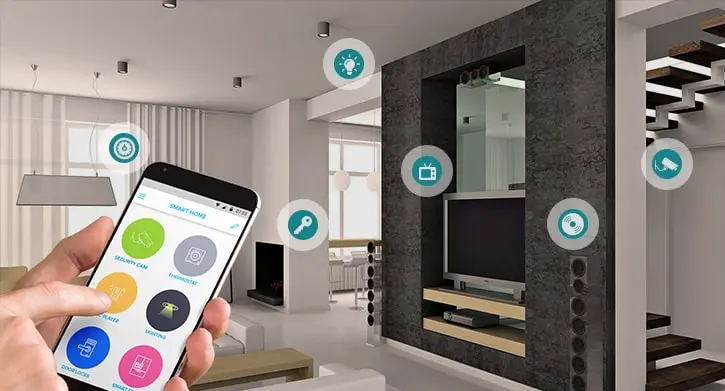Cool and Efficient: 3 Energy-Saving Tips for Electric Fans
Subheading: Optimize Fan Placement
The placement of your electric fan can significantly impact its energy efficiency. To maximize airflow and cooling effectiveness, position your fan strategically. Place it near windows or doors to draw in cooler air from outside, or set it up in a corner to create a cross-ventilation effect. Avoid placing your fan near electronics or appliances that generate heat, as this can interfere with its performance and efficiency.
Subheading: Use Fan Settings Wisely
Most electric fans come with different speed settings to adjust airflow according to your needs. To save energy, use your fan on the lowest setting possible that still provides sufficient cooling. Running your fan on a higher setting consumes more energy without necessarily providing significantly better cooling. Additionally, consider using oscillation or directional settings to distribute airflow evenly throughout the room, reducing the need for multiple fans.
Subheading: Maintain Your Fan Regularly
Regular maintenance is essential to ensure your electric fan operates efficiently and effectively. Dust and dirt buildup can obstruct airflow and strain the motor, leading to decreased performance and increased energy consumption. Clean your fan regularly by wiping down the blades, grille, and housing with a damp cloth or using a vacuum cleaner with a brush attachment. Additionally, check for any loose or damaged parts and tighten or replace them as needed to keep your fan running smoothly.
Subheading: Harness Natural Ventilation
In addition to using electric fans, take advantage of natural ventilation to cool your home efficiently. Open windows and doors during cooler times of the day, such as early morning or late evening, to allow fresh air to circulate throughout your space. Consider using window fans or exhaust fans to facilitate airflow and draw out warm air from your home. By combining natural ventilation with electric fans, you can create a comfortable and energy-efficient cooling solution for your space.
Subheading: Utilize Energy-Saving Features
Many modern electric fans come with energy-saving features designed to optimize performance while minimizing energy consumption. Look for fans with programmable timers or sleep modes that automatically adjust fan speed or shut off after a set period. Some fans also come with energy-efficient DC motors that consume less power than traditional AC motors while providing comparable airflow. By utilizing these energy-saving features, you can reduce your energy usage and lower your utility bills without sacrificing comfort.
Subheading: Consider Ceiling Fans
Ceiling fans are another energy-efficient cooling option for homes. In addition to providing a refreshing breeze, ceiling fans can help circulate air more effectively, reducing the need for air conditioning. During warmer months, set your ceiling fan to rotate counterclockwise to create a cooling downdraft. In cooler months, reverse the direction of your fan to clockwise to create an updraft that helps distribute warm air evenly throughout the room. By using ceiling fans in conjunction with electric fans, you can maintain a comfortable temperature while minimizing energy consumption.
Subheading: Invest in Energy-Efficient Fans
When purchasing a new electric fan, opt for models that are ENERGY STAR certified or labeled as energy-efficient. These fans are designed to meet strict energy efficiency criteria set by the Environmental Protection Agency (EPA), ensuring they consume less energy while providing optimal performance. Look for fans with high airflow efficiency ratings (CFM per watt) to get the most cooling power for your energy usage. While energy-efficient fans may have a higher upfront cost, they can lead to significant long-term savings on your energy bills.
Subheading: Use Fans in Conjunction with Air Conditioning
To maximize energy savings and maintain comfort, consider using electric fans in conjunction with your air conditioning system. By using fans to circulate cooled air more effectively, you can lower your thermostat setting and reduce your air conditioning usage. Place fans strategically near air vents or in high-traffic areas to distribute cooled air evenly throughout your space. Additionally, using fans allows you to set your air conditioner to a higher temperature without sacrificing comfort, further reducing energy consumption and saving you money.
Subheading: Upgrade to Smart Fans
Smart fans are another energy-saving option for homeowners looking to optimize their cooling efficiency. These fans are equipped with built-in sensors and connectivity features that allow them to adjust fan speed and operation based on environmental conditions and user preferences. Some smart fans can even be controlled remotely via smartphone apps or integrated with smart home systems for seamless automation. By upgrading to smart fans, you can enjoy personalized comfort while minimizing energy usage and reducing your carbon footprint.
Subheading: Practice Energy-Efficient Habits
In addition to utilizing energy-saving features and technologies, adopting energy-efficient habits can further reduce your energy consumption and environmental impact. Turn off fans when they’re not in use or when you leave the room to avoid unnecessary energy waste. Close windows and doors when running fans to prevent cooled air from escaping and warm air from entering your home. Additionally, consider using fans in combination with other cooling strategies, such as shading windows or using insulated curtains, to maximize energy savings and comfort.
Subheading: Seek Professional Advice
If you’re unsure about the most effective ways to optimize your electric fan’s energy efficiency, consider seeking advice from a professional HVAC technician or energy auditor. These experts can assess your home’s cooling needs and recommend personalized solutions to improve energy efficiency and comfort. From selecting the right fan size and type to optimizing airflow and ventilation, professional guidance can help you make informed decisions and achieve maximum energy savings in your home. Read more about 3 energy saving tips for electric fan











